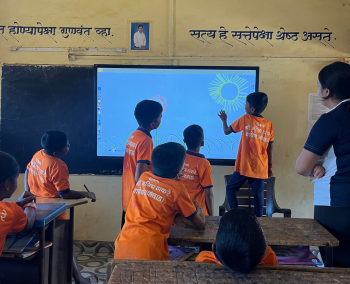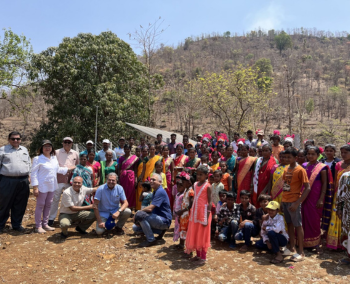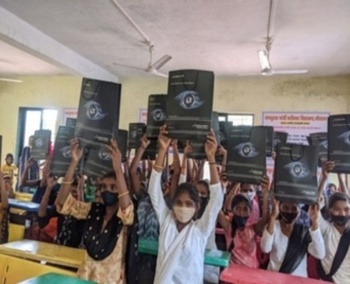6 Ways How Electrification Supports Local Economies and Social Stability

As per the Ministry of Social Justice and Empowerment, there are still close to 900 villages in India that still don’t have electricity*.
Electrification is more than just a technological advancement – it is a catalyst for economic growth and social transformation, especially in rural India. In a country where over 65% of the population resides in villages, access to electricity can redefine livelihoods, education, healthcare, and overall community well-being.
Despite rapid progress in electrification, many rural areas still struggle with inconsistent power supply and lack of reliable infrastructure. However, the fact is simple – where electricity reaches, development follows.
At Project Chirag, we have seen first-hand how electrification supports local economies and fosters social stability in rural India.
6 ways how rural electrification in India helps socio-economic development
Sitting in our airconditioned home or office, reading this blog, we might not truly comprehend the importance of electricity; we feel troubled when there is a power-cut, because it means no light or Wi-Fi connectivity for us. However, imagine the condition of those who have never known electricity!
Rural electrification goes beyond just bringing light – it is about bringing hope and a way to a better future.
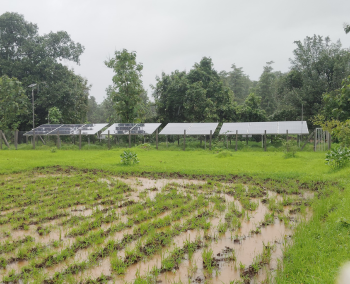

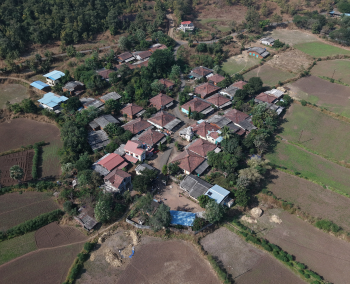
Job Creation and Economic Growth
With reliable electricity, businesses can thrive in rural areas – anything from shops to workshops, and small enterprises can operate beyond daylight hours, and that will help increase revenue. Local entrepreneurs can find opportunities in running mills, dairy farms, or even cyber cafes, enhancing economic activity. The rise of cottage industries and micro, small, and medium enterprises (MSMEs) generates stable income sources, helping families break the cycle of poverty. Rural electrification also attracts investment and industrialization, paving the way for rural employment and reducing migration to urban areas.
Empowering Agriculture and Rural Industries
Agriculture is the backbone of India’s rural economy, and electrification plays a critical role in making farming more efficient and profitable. For instance, when farmers have electrified water pumps, it helps reduce dependency on erratic monsoons, while ensuring a stable water supply for crops.
Take for instance the case of Patilpada in Palghar, Maharashtra – when Project Chirag helped install a 7.5HP solar pumping system to enable water lifting across 20 acres of farmland, things changed for the better. Parshuram Tabale, a dedicated farmer cultivating Mogra flowers was one of the beneficiaries. Irrigating his lands was a tough task for him, because his land sits on a slope; this meant, he was constantly relying on the monsoons to hydrate his lands. However, solar power has ensured reliable water supply all year round, resulting in four-fold increase in not only crop yield, but also income.
Electricity also enables automation of farming tasks such as threshing, milling, and packaging, reducing manual labor and increasing output. In addition to this, farmers can also set up cold storage facilities that can help reduce post-harvest losses, allowing farmers to sell produce at better prices.
Improved Healthcare and Sanitation
Rural electrification in India can help revolutionise healthcare infrastructure including ensuring medical attention, around the clock. Electrified primary health centres can provide emergency services at night, significantly reducing maternal and child mortality rates. If modern day medical equipment needs to function properly, electricity is a must, and this would include diagnostic tools, ventilators, and surgical equipment. In addition to that, refrigeration can help store life-saving vaccines and medicines at proper temperatures, preventing wastage.
Education and Digital Inclusion
Electricity is a game-changer in rural education, because when students are no longer dependent on candlelight or kerosene lamps, they get to study in better conditions and focus better. With electricity, schools can introduce digital learning, making education more engaging and skill-oriented and with access to computers, the internet, and online educational resources, rural children have a greater opportunity to overcome the urban-rural knowledge gap.
Let’s take another example to elucidate this point:
Primary education in rural Maharashtra, managed by Zilla Parishads, constantly suffers from inadequate infrastructure and unreliable, unaffordable power. The situation was particularly dire in Palghar district – so, Project Chirag, in association with Konica Minolta Business Solutions India Private Limited came up with a transformative intervention. After identifying 10 local schools, we helped install solar off-grid PV systems, which ensured reliable electricity, with reduced costs. In addition, we also added electrical fixtures, and a 43-inch Smart TV for each school. The result was incredible – student attendance improved, learning hours increased and performances of both students and teachers were now better.
“The increase in attendance and interest of children to learn has made me even more enthusiastic and energized to teach more efficiently. Solar power made this positive change possible, which ensured that our classrooms were well-lit and equipped with television, significantly boosting children’s engagement levels and interest in learning.” – Mahindra Harad, Primary School Teacher, Bartadpada.
By fostering education and digital inclusion, electrification empowers the next generation with knowledge and skills, paving the way for sustainable development.
Women’s Empowerment and Safety
Electricity probably has the most direct connection to the lives of rural women – the simplest being, how it enhances safety for women. Street lighting reduces crime and improves mobility, allowing women to move freely after dark. When women can move around the community without fear, they can work for later hours, increasing income. Having electricity at home also allows women to run tailoring, handicrafts, and food-processing businesses from home, boosting family income. When women are empowered, entire communities flourish, leading to stronger economic and social structures and any community empowerment project needs to prioritise women too.
Strengthening Social Stability and Community Development
Rural electrification projects in India are one of the major factors in enhancing social stability and empowering entire communities. Given that the world is going online and India is following suit. With online banking and registration services becoming the common norm and every Indian citizen being registered for Adhaar services, being connected is imperative. Having access to electricity can ensure that people are able to access all such services, aiding governments to become more effective. Electrified community centres and temples also provide spaces for social engagement, helping preserve cultural heritage.
Electrification is a transformative force that drives more than just economic growth. It can help improve education and healthcare, empower women, and help build more resilient communities. As our country marches towards a self-reliant and digitally inclusive future, electrification remains a cornerstone of rural development and community empowerment in India – bringing light, opportunity, and prosperity to millions.
